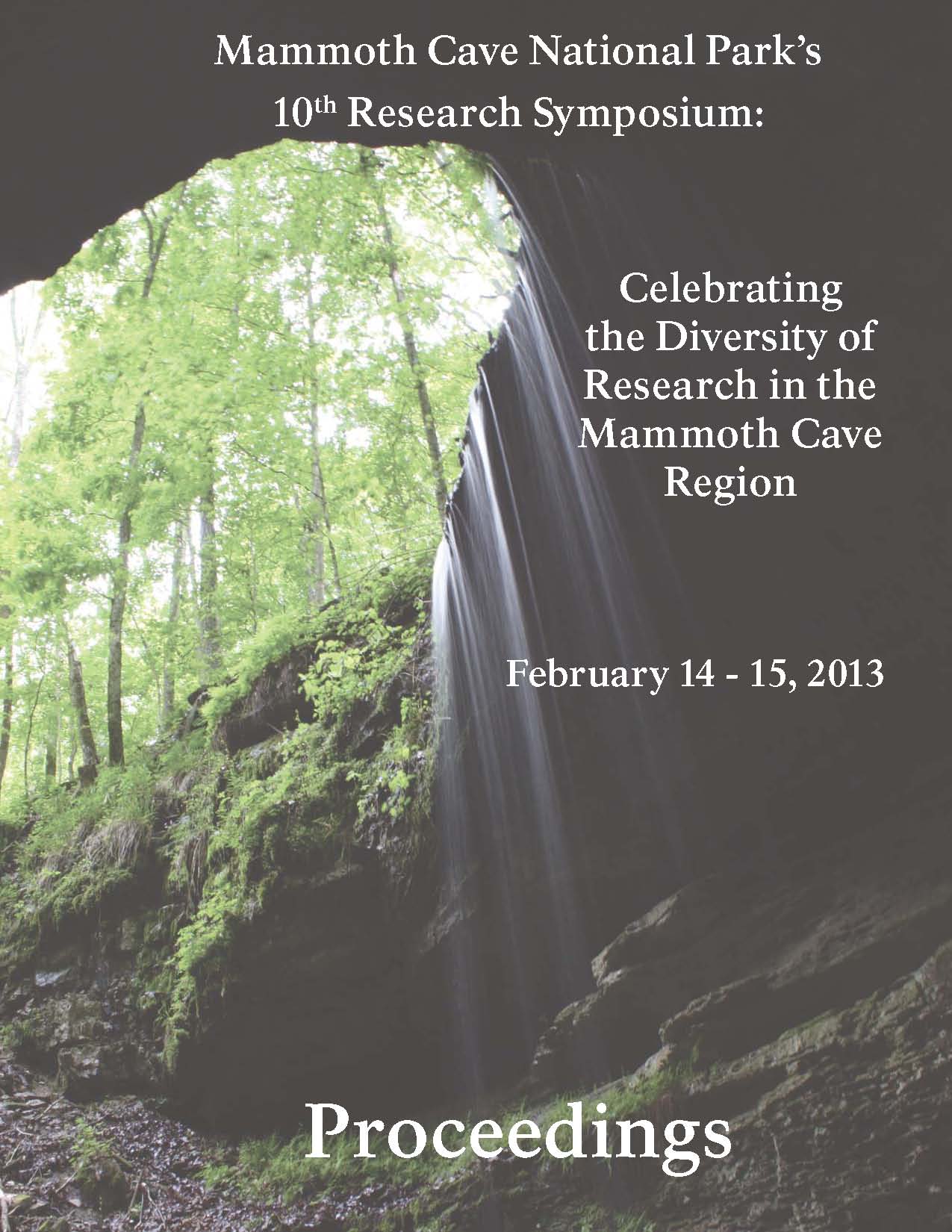Start Date
15-2-2013 2:50 PM
Description
Many of the dry passages of the cave are lined with gypsum (CaSO4�2H2O) crystals, an evaporite mineral. However, the source of the sulfur in these gypsum deposits is poorly constrained with possible sources including pyrite, sedimentary gypsum/anhydrite, and carbonate associated sulfate (“CAS”, SO42- substituted for CO3 2- in the calcite crystal lattice). The two most abundant forms of sulfur in the bedrock above and around Mammoth Cave are pyrite (FeSs) and CAS. These phases commonly have very different isotopic signatures (δ34S)* and the δ34S values of these phases can be compared to the δ34S of the gypsum to aid in identifying the source of the sulfur. Isolation of sulfur from pyrite and CAS is currently ongoing. Results from 110 gypsum crystals, 4 rocks in strata from within the caves, and 15 rocks from strata overlying the caves reveal some distinct patterns. 1) Gypsum crystals show relatively small scatter (~5‰) for samples from a single location (e.g. a 30 m2 room). 2) A significant correlation between δ34Sgypsum and elevation suggests a variable δ34Ssource over vertical distances of a few meters. 3) Microsampling of sulfur along the growth axes of single gypsum crystals shows a constant δ34S values suggesting no change in δ34S of the S source during its growth. Because the growth period of these crystals may be on the order of thousands of years, these results suggest a constant sulfate for long intervals. The relationship to δ34S of samples in a given room and elevation suggests that the source of gypsum sulfur is local, arising from lateral, rather than vertical, fluid fl ow, an important insight into the transport pathways of water in a karstic system. Sampling of pyrite and CAS is currently ongoing.
*δ34S = [(34S/32Ssample)/(34S/32Sstandard)-1(x)1,000‰ where 34S and 32S are the molar ratios of each S isotope given in “per mil” (‰), equivalent to parts per thousand.
Recommended Citation
Metzger, J. Garrecht; Fiske, David A.; Osburn, Bob; and Addison, Aaron, "Using S Isotopes to Identify the Source of Gypsum in Mammoth Cave" (2013). Mammoth Cave Research Symposia. 30.
https://digitalcommons.wku.edu/mc_reserch_symp/10th_Research_Symposium_2013/Research_Posters/30
Included in
Animal Sciences Commons, Forest Sciences Commons, Geology Commons, Hydrology Commons, Other Earth Sciences Commons, Plant Sciences Commons
Using S Isotopes to Identify the Source of Gypsum in Mammoth Cave
Many of the dry passages of the cave are lined with gypsum (CaSO4�2H2O) crystals, an evaporite mineral. However, the source of the sulfur in these gypsum deposits is poorly constrained with possible sources including pyrite, sedimentary gypsum/anhydrite, and carbonate associated sulfate (“CAS”, SO42- substituted for CO3 2- in the calcite crystal lattice). The two most abundant forms of sulfur in the bedrock above and around Mammoth Cave are pyrite (FeSs) and CAS. These phases commonly have very different isotopic signatures (δ34S)* and the δ34S values of these phases can be compared to the δ34S of the gypsum to aid in identifying the source of the sulfur. Isolation of sulfur from pyrite and CAS is currently ongoing. Results from 110 gypsum crystals, 4 rocks in strata from within the caves, and 15 rocks from strata overlying the caves reveal some distinct patterns. 1) Gypsum crystals show relatively small scatter (~5‰) for samples from a single location (e.g. a 30 m2 room). 2) A significant correlation between δ34Sgypsum and elevation suggests a variable δ34Ssource over vertical distances of a few meters. 3) Microsampling of sulfur along the growth axes of single gypsum crystals shows a constant δ34S values suggesting no change in δ34S of the S source during its growth. Because the growth period of these crystals may be on the order of thousands of years, these results suggest a constant sulfate for long intervals. The relationship to δ34S of samples in a given room and elevation suggests that the source of gypsum sulfur is local, arising from lateral, rather than vertical, fluid fl ow, an important insight into the transport pathways of water in a karstic system. Sampling of pyrite and CAS is currently ongoing.
*δ34S = [(34S/32Ssample)/(34S/32Sstandard)-1(x)1,000‰ where 34S and 32S are the molar ratios of each S isotope given in “per mil” (‰), equivalent to parts per thousand.

